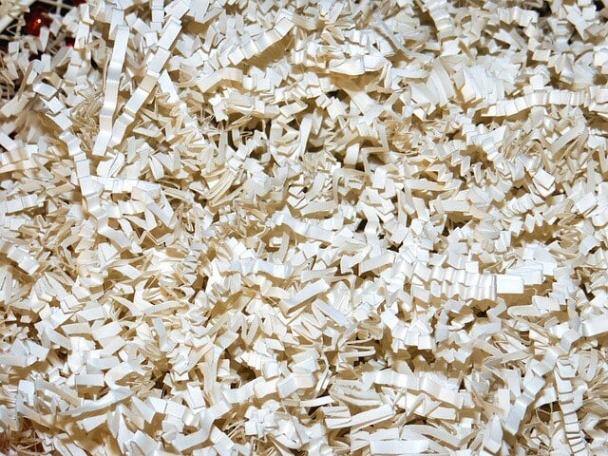Few steps in the document management process need more care and attention than confidential shredding. Whereas storage and scanning certainly require responsible handling, there is an intentional finality to shredding that means if data is accidentally disposed of, it cannot be recovered. It is, therefore, vital that you entrust the duty to experts who can make sure that only the intended documents are disposed of, personal data is kept confidential throughout the disposal, and whatever is destroyed cannot be recovered.
Shredding documents might sound either like a mundane administrative task or one that is quite novel - allowing you to release your inner destructive child - but whatever your attitude, it is important that it is not undertaken lightly. After all, GDPR legislation requires strict confidentiality of personal data, and failure to fulfill this strict obligation can rightfully lead to significant financial and legal consequences.
In this blog post, we want to shed some light on data destruction by outlining our shredding process and the four main steps that it consists of. By doing so, we hope that you will see our service as an uncomplicated one, but one that is - and should be - approached with the utmost care, attention and professionalism.
Step one: Collection and transportation
At first glance, you would be forgiven for thinking this is the simplest and most straightforward of our four-step process - transport X number of files from A to B. In actual fact, it is perhaps the most important because it is here that files can - without proper care and attention - easily go missing, and (as we have already mentioned) once a physical document goes missing, it cannot be recovered. To prevent a piece of data from going missing or unaccounted for, all files that we remove from your premises will be comprehensively catalogued, ensuring that a transparent paper trail exists from collection through to disposal, and all boxes are fastened with anti-tamper seals to provide you with peace of mind.
Having arranged a convenient time to collect your documents for disposal and catalogued anything that we remove from your site, we then transport them to our dedicated shredding facility, logging the arrival and keeping you updated on our progress.
Step two: Shredding
The shredding machines that we use to confidentially dispose of documents are quite impressive. Whereas your domestic machine will have cross-cutting blades to obscure each piece of shredded material, our machines consist of powerful dual-shaft shredding blades that can handle many types of material and cut the data into tiny, unsalvageable pieces. The high-capacity industrial shredders are equipped with several other efficiency-boosting features such as an automatic feed and anti-jam technology.
Once completed, a specialist will check over the resultant pulp to ensure the shredding process has been successfully completed. This manual check confirms that the data is now irrecoverable, and even with the best will in the world the document cannot be put back together.
Step three: Recycling
It is the responsibility of every organisation to be more sustainable in a bid to reduce waste and limit their contributions to man-made climate change. Part of our efforts - alongside reducing energy consumption and transport emissions - is to recycle the shredded material into new products such as recycled paper (think notepads that have the claim ‘made using recycled material’ on the cover), tissues, cardboard boxes and egg boxes.
It is important to emphasise that despite being recycled into a new product after being shredded, the data contained within your documents are entirely gone and cannot be salvaged. We only recycle the paper because we know that our clients’ information is entirely destroyed. 50 years ago, the shredded material might have been burned, but we believe that this is unnecessary and, in our climate-conscious world, harmful.
Step four: Issuing the certificate of destruction
You and your clients need confirmation that your data and theirs has been destroyed successfully. A certificate of destruction provides exactly that, demonstrating compliance with GDPR law and completing the audit trail loop to refer back to if necessary in the future. Included on that certificate should be things like:
- The destruction date;
- The name of the company that has carried out the destruction;
- Your information;
- The unique batch number that should correspond to the paperwork created when collecting the files in step one;
- A description of the materials destroyed;
- The method of destruction; and
- A signature from the shredding company that confirms the data destruction.
How secure is the shredding process?
Entrusting your document shredding to experienced professionals with specialist equipment is a very secure way of destroying data. Our four-step process is fully compliant with GDPR law and utilises advanced shredding technology that turns documents into tiny, confetti-like particles, making reassembly virtually impossible. Furthermore, secure handling procedures are in place from collection to destruction, with anti-tamper seals, secure transportation, and restricted access to shredding facilities, preventing your sensitive information falls into any unauthorised hands.
If you are currently surrounded by obsolete files, but you don’t have the time, facilities or inclination to dispose of them properly, this is your invitation to try our off-site dedicated shredding service. While the shredding process might be a straightforward one, it is also one that is grounded in data protection compliance, accommodated by state-of-the-art technology and evidenced by a thorough papertrail that includes a certificate of destruction.
For further information or to arrange the destruction of your documents, please speak to a member of our team today.
